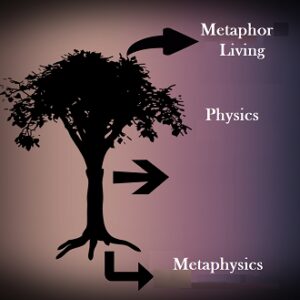
Metaphor and Metaphysics
The peak and decline of Aristotle’s metaphysics, in Paul Ricoeur’s  analysis, is “in the non-scientific characteristics of analogy, taken without its terminal meaning, regroup in his eyes in an argument against analogy” (Ricoeur, 2005, p. 414), and as the analogy was linked to the question of being, ontological questions are submerged with it.
analysis, is “in the non-scientific characteristics of analogy, taken without its terminal meaning, regroup in his eyes in an argument against analogy” (Ricoeur, 2005, p. 414), and as the analogy was linked to the question of being, ontological questions are submerged with it.
However, Ricoeur clarifies, “it is because the ‘investigation’ of a non-generic connection of being remains a task for thought, even after the failure of Aristotle, that the problem of the ‘conducting thread’ will continue to be presented even in modern philosophy. ” (RICOEUR, 2005, p. 415).
For the author, while “the first gesture continues to be the conquest of a difference between transcendental analogy and poetic similarity” (Ricoeur, 2005, p. 416), which he explains and will not be extended here, the second “counter- example” of the “discontinuity of speculative discourse and poetic discourse” is much more serious, and it ranges from Kant’s discourse to Heidegger.
He explains that this was done in a mixed discourse that the doctrine of analogy entis reached in its full development and that was called ontotheology, due to the pretension of linking divine transcendence to Being, but ignoring the Thomistic discourse, which is “an inestimable testimony”.
What Aquinas does is “establish theological discourse at the level of a science and thus completely subtract it from the poetic forms of religious discourse, even at the price of a rupture between the science of God and biblical hermeneutics” (p. 417) .
However, the problem is more complex “than that of the regulated diversity of the categories of being of Aristotle”, “to speak rationally of the creator God of the Judeo-Christian tradition. The bet is to be able to extend to the question of divine names the problematic of the analogy raised by the equivocal notion of being” (p. 417), remember here the battle between nominalists and medieval realists.
Explaining that the doctrine of the analogy of being was born “from this ambition to involve in a single doctrine the horizontal relation of categories to substance and the vertical relation of created things to the creator” (p. 419), now this was exactly the project of an ontotheology .
Thus, the Thomistic discourse “rediscovers a similar alternative: to invoke a discourse common to God and creatures would be to ruin divine transcendence, to assume a total incommunicability of the meanings from one plane to the other would be, in compensation, to condemn oneself to the most complete agnosticism” (p. 418), he takes up the categorical problem “in its broad lines” and “it is the very concept of analogy that must be constantly re-elaborated” (p. 420).
A question remains to be answered, wouldn’t this be a “return from metaphysics to poetry, through a dishonorable recourse to metaphor, according to the argument that Aristotle opposed to Platonism?” (p. 421).









